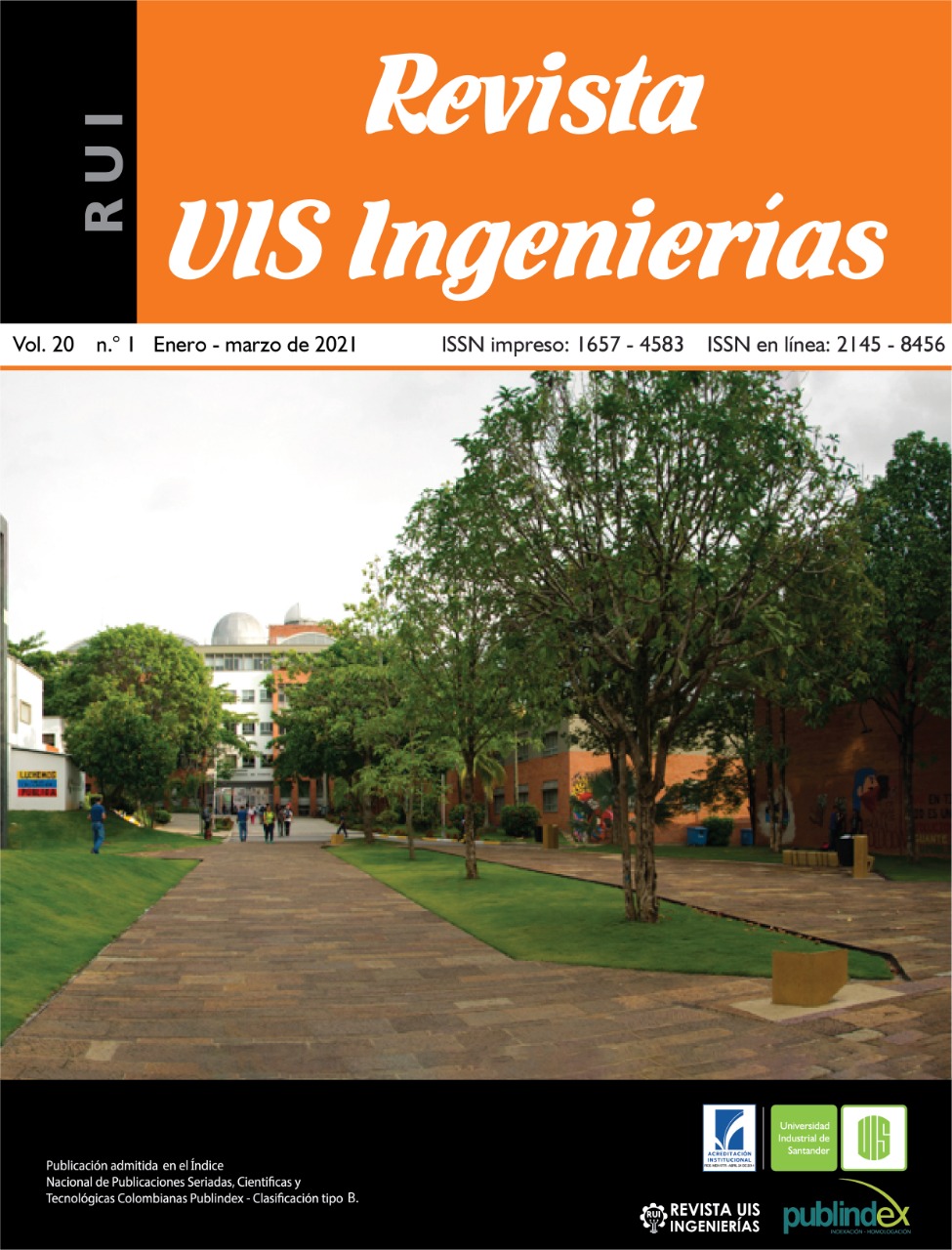Application of concurrent engineering oriented to the manufacture of a tool for the extraction of a crown nut on an excavator
Published 2020-11-18
Keywords
- DFMA,
- concurrent engineering,
- QFD,
- crown-nut
How to Cite
Copyright (c) 2020 Revista UIS Ingenierías

This work is licensed under a Creative Commons Attribution-NoDerivatives 4.0 International License.
Abstract
The article presents the application of Concurrent Engineering integrating design for quality (QFD) and design for manufacture and assembly (DFMA), in the manufacture of a mechanical tool for the dismantling of a Turkish crown from a crawler excavator. The study was developed due to the need that the Maintenance Department of a coal extraction company had in disassembling a propulsion transmission of the hydraulic excavator RH340B to repair some of its parts in bad condition. The analysis was since the design of this tool met the specifications of the torque required for the disassembly of the system. It is concluded that through the applied methods it results in a design of 26 pieces, with acceptable values in the efficiency of the assembly and in the complexity factor. In addition, the manufactured tool was of great help in disassembling the final control, since its local manufacture achieved savings of almost 75% of the investment costs required by the acquisition of an original TEREX|O&K tool.
Downloads
References
[2] H. M. Ramírez, E. E. N. Núñez, J. T. Salcedo, Diseño para la Fabricación y Ensamble de Productos Soldados. Barranquilla, Colombia: Ediciones Uninorte, 2009.
[3] J. Y. Farsi, N. Hakiminezhad, “The integration of QFD technique, value engineering and design for manufacture and assembly (DFMA) during the product design stage”, Journal of Advances in Environmental Biology, vol. 6, no. 7, pp. 2096-2104, 2012.
[4] J. Serrano, J. M. Bruscas, F. Romero, Diseño para Fabricación y Montaje, Ingeniería Concurrente: una Metodología Integradora. Ed. Riba C. molina A, editorial de la Universidad Politécnica de Cataluña, 2006.
[5] C. Velasco Meseguer; “Metodología de diseño y desarrollo de productos basada en la ingeniería concurrente: aplicación al diseño de utillajes progresivos”, en 6th International Conference on Industrial Engineering and Industrial Management. Vigo, 2012, pp. 919-926.
[6] X. A. Koufteros, M. Vonderembse, “Concurrent engineering and its consequences. journal of operations management”, Journal of Operations Management, vol. 19, no. 1, pp. 97-115, 2001, doi: 10.1016/S0272-6963(00)00048-6
[7] T. P. Tsai, H. C. Yang, P. H. Liao, “The application of concurrent engineering in the installation of foam fire extinguishing piping system”, Procedia Engineering, vol. 14, pp. 1920-1928, 2011, doi: 10.1016/j.proeng.2011.07.241
[8] A. Mayyas, Q. Shen, A. Mayyas, D. Shan, A. Qattawi, M. Omar, “Using quality function deployment and analytical hierarchy process for material selection of body-in-white”, Materials and Design, vol. 32, no. 5, pp. 2771-2782, 2011, doi: 10.1016/j.matdes.2011.01.001
[9] S. M. Mohamad, A. R. Yusoff, “Improvement of take-away water cup design by using concurrent engineering approach”, Procedia Engineering, vol. 53, pp. 536-541, 2013, doi: 10.1016/j.proeng.2013.02.069
[10] K. Venkataraman, B. Vijaya Ramnath, S. Kannapan, L. Vinoth, K. V. Velmurugan, “Comparative analysis of ahp and anp model for lean production system justification”, International Journal Applied Mechanics and Materials, vol. 591, pp. 197-201, 2014, doi: 10.4028/www.scientific.net/AMM.591.197
[11] B. V. Ramnath, V. Chandrasekhar, C. Elanchezhian, L. Vinoth, K. Venkatraman, “Value stream evaluation and simulation to improve material flow and productivity”, International Journal Applied Mechanics and Materials, vol. 612, pp. 89-95, 2014, doi: 10.4028/www.scientific.net/AMM.612.89
[12] E. E. N. Nuñez, “Modelo de diseño y conocimiento en tecnologías de soldadura para el desarrollo de productos soldados”, Revista Scientia et Technica, vol. 1, no. 36, 2007, doi: 10.22517/23447214.5003
[13] G. G. Boothroyd, P. Dewhurst, W. A. Knight, Product Design for Manufacture and Assembly, 3rd edn. Boca Raton, FL, USA: CRC Press, Taylor and Francis Group, 2011.
[14] C. R. Romeva, Diseño Concurrente. Ediciones UPC, Universidad Politécnica de Cataluña, España, 2010.
[15] K. T. Ulrich y S. D. Eppinger, Diseño y Desarrollo de Productos. Mc. Graw-Hill. Quinta Edición, México, 2013.

